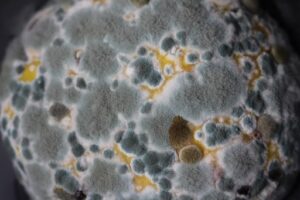Taking a Closer Look at Molds – Aspergillus Mold Removal
 The world is a rich tapestry, even for mold, which makes mold removal such a tedious task as well. The more you look at any given species, the more variations you will find, each with varying properties from the other. The same goes for household mold. While some thrive outdoors and in the sun, others need little sunlight, and some don’t need any sunlight at all.
The world is a rich tapestry, even for mold, which makes mold removal such a tedious task as well. The more you look at any given species, the more variations you will find, each with varying properties from the other. The same goes for household mold. While some thrive outdoors and in the sun, others need little sunlight, and some don’t need any sunlight at all.
Mold removal processes also differ for each mold variety, which is why it is important that you are able to differentiate between them. Using the wrong technique or chemical may actually result in either inefficient and incomplete removal or may even end up strengthening its root system altogether!
In this article, we will take a look at Aspergillus, an indoor old mold species group that thrives on excessive moisture, poor indoor air quality, and slightly warmer conditions. It is important that you focus on its mold removal because Aspergillus is a rather dangerous group of molds.
Household Mold Species – What Is Aspergillus Mold?
The Aspergillus family represents over 250 different species of mold. It was first discovered in 1729 by an Italian priest and biologist, Pier Antonio Micheli (born 11th December 1679). He had a broad interest in botany and was one of the first botanists ever to specialize in a new group of plants. His primary interest included plants such as:
- Umbellifers
- Gramineae
- Mosses
- Marine algae, and unusually (for the time)
- Fungi.
He found the Aspergillus group when he saw a white, fluffy organism growing on cardboard. Strangely for him, the organism was plant life, which eventually changed color.
Aspergillus turns green, brown, black, or yellow, based on which species it is. When fully grown, the mold releases its spores into the air. The closer the source is, the more concentrated these spores are, and naturally, the spores are more concentrated outdoors than it is indoors.
Usually, the mold in this group presents some serious health issues, especially to those who have weaker lungs or immune systems; however, there are some that are harmless and a few that are actually useful for us. For example, we use the Aspergillus niger variant extensively to produce citric acid – one of the most common flavoring agents and preservatives out there.
Aspergillus – Common Occurrences
Aspergillus species molds are much more common in carbon-rich environments than anywhere else in your house, which is why you will either find them near sewage lines, fireplaces, wood, your vegetable garden, compost piles, or any corner in the kitchen where food chunks may fall.
For Aspergillus, the most attractive place to grow and thrive include high-starch foods such as bread and potatoes. The mold doesn’t need a high-nutrient environment to grow in but does need the damp to survive. Areas such as water-damaged walls, damp carpets, doors, windows, pillows, upholstery, and furniture are common growth areas for Aspergillus.
The Health Implications of Aspergillus – Why Mold Removal Is Key
Molds from the Aspergillus group are particularly dangerous for people who already have a weakened immune system or an existing lung condition. Healthy people are safer around the mold, but there is a risk of infection for them as well.
When you breathe in Aspergillus spores, toxins get carried into your lungs with the spores. These toxins (mycotoxins) can absorb into the alveolus and lead to a group of diseases called Aspergillosis. This is an infection that usually couples with other diseases in the body and spreads throughout the body.
The problem with these diseases is that they come off as a regular infection, all while exacerbating existing conditions within the body. As the toxins spread, they start forming “fungal balls” inside organs, specifically in the lungs, which take quite a bit of effort to break down.
Other symptoms of Aspergillosis include, but aren’t limited to:
- Shortness of breath
- Chest pain
- Coughing
- Excessive mucus
- Consistent high fevers
- Headaches
- Insomnia
- Frequent allergic reactions (either in the form of sneezing or constant itching and rashes)
- Fatigue
- Asthmatic symptoms
Under the right conditions, Aspergillus spores can also find roots in human tissue. This growth is more common for people who have a weakened immune system, and there is a very good chance that this growth will be fatal. Anti-bacterial medicine won’t work with Aspergillosis and therefore require anti-fungal medications.
Unfortunately, Aspergillus spores are one of the leading causes of illnesses in humans and animals alike. If you are actively and extensively exposed to Aspergillus mold, you may eventually develop hypersensitivity to dust, pollen, and of course, spores. This means an increased prevalence of allergic reactions.
Aspergillus gives off a very distinctive, heavy, and slightly pungent odor. If you are noticing this odor or find indoor mold, there is a very good chance that it is one from the Aspergillus strain. You should immediately call professionals to help you verify which mold it is and what you need to do for mold removal and disaster restoration.
Whenever there is water infiltration and the conditions remain damp for over 12 hours, you should immediately either check for mold on your own or call for a professional mold inspection. 911 Restoration of Raleigh is here to help you with your mold removal ventures for residential and commercial restoration alike. Give us a call, and we’ll come right over!


